230 h.p. from 4A-GE - Toyota Carib, 1.6 L, 1988
An article from the native magazine Garage.nsk.
This is a story about the peculiarities of the engine for a 1600 cc buggy, the Novosibirsk team of STK "Center", which took part in the 2007 European Autocross Championship. (Now they are preparing two for circuit races in the Lada class on the Red Ring)
Article by Lesha Shmelev. Unfortunately, the archive with photographs collapsed on the site, so there is a minimum of photographic materials.
Building a naturally aspirated naturally aspirated engine using the example of Toyota 4A-GE
Read and listen to everyone! We raise the curtain hiding the secrets of tuning an atmospheric engine from outsiders using the example of the Toyota 4A-GE engine, of which there are a dime a dozen in Novosibirsk. Such motors are made not just for driving around the city with false starts from traffic lights, and not for a couple of races in a quarter, and even more so, not for pathos at an auto show.
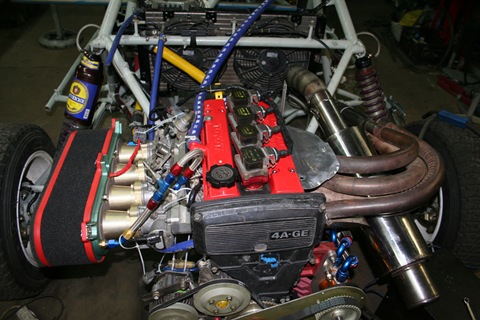
These engines are recognized to withstand high loads in autocross, rally, road circuit racing, etc.
Information provided by the Design Bureau of the sports and technical club "Center". Everything described below was manufactured in the design bureau, which has its own production and technical base: metalworking shop; 2 turning, milling, boring, jig boring, honing, circular and surface grinding machines; argon arc welding; a thermal oven for technological alteration of the cylinder head and other special parts that require heating before press-fitting of the mating parts; 2 precision (high-precision) drilling machines, rollers, a metal cutting guillotine and many other "devices" for the construction of sports-racing cars, motorcycles or any other equipment.
What has been done:
1. Four-throttle 8-nozzle injection, made from scratch by ourselves. At the inlet there is a special large sports filter of low resistance.
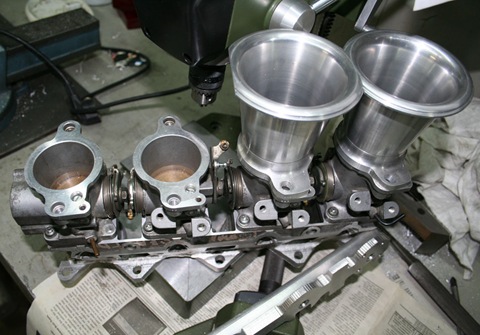
2. Increased diameters of inlet and outlet ports on the cylinder head of the base engine. "Sawed" inlet / outlet with sharp passages to the valves: the walls between the passages are rather thin in thickness, and the edges are sharp. Initially, the jumper is thick and the edge is blunt. By the way, in fact, it is inappropriate to "display" the walls of the cylinder head inlet in the mirror. gasoline then begins to condense and flow along the walls, mixing poorly with air. Therefore, the walls of the 4A-GE inlet have a rough surface. Information on the thickness of the walls of the cylinder head channels was obtained as follows: cuts of a similar head were made along and across. The inlet / outlet walls are welded with aluminum (using argon welding) in order to maximize the inlet channel without perforating the cylinder head wall.

Then, with a high-strength ball cutter, the channels were manually made, first the smallest, then the largest, etc. The set consists of 9 cutters with a pitch of 0.5 mm, made by special order in the laboratory of sports and racing cars at AvtoVAZ.
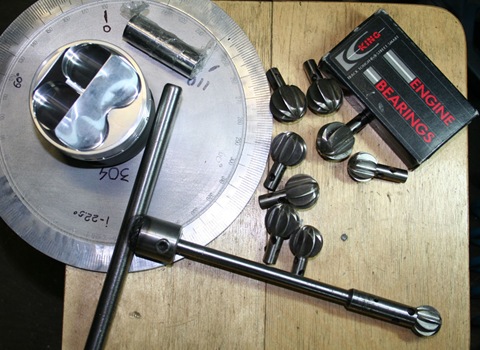
2. 4A-GE motor head: oversized valve seats made of special alloy. Saddles sit in the cylinder head in a special oven that heats up to a certain temperature. The material becomes soft and expands, after which the seats are pressed into the cylinder head with a special device.
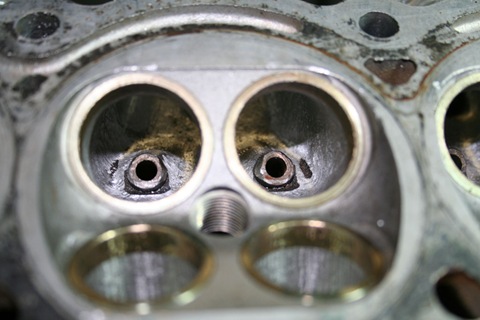
3. Enlarged combustion chambers are polished. First, the compression ratio is checked and all unnecessary is "cut down". On 102 octane fuel, the compression ratio is 13.
4. Cylinder bowls bored and adjusted to Japanese first oversize, no longer made to fit the 1.600cc competition regulations. cm.
5. Pulleys to drive the oil pump, gears with variable valve timing, pistons - TODA RACING. Homemade diffuser for the injection system. ARIAS PISTONS pistons. Gears with variable valve timing TODA RACING. Flywheel TODA RACING, SACHS clutch basket, SACHS clutch disc. JUN Crankshaft: 2.5 kg heavier than standard, machined from high quality alloy steel in one piece. The torque with this knee increases to 21 kg. Oil tank with integrated antifoam and certified sports fuel tank. Ignition coils from ZUNDSPULE, supplier for BMW.

6. The thermostat is completely absent on the motor, everything is connected directly, the coolant flows in a large circle, there is no small circle at all. For efficient heat dissipation, two sports fans are used, one fan is not enough. The radiator is made of a cellular system from the "Niva" and the sidewalls from the VAZ-2108.
7. Wet sump engine. After the modifications, the engine power was so high for the block that it lacked rigidity and drove it. To prevent this from happening, it is necessary to install a special plate under the "wet" sump or put a "dry" sump. Using a dry sump system allows you to forget about the unpleasant consequences of oil drainage from the intake in fast tight turns. Therefore, the design bureau used a dry sump system, which gives additional rigidity to the engine, in addition, it ensures uninterrupted stable supply of engine oil through the oil channels of the internal combustion engine with an intermediate oil defoamer in the oil sump.
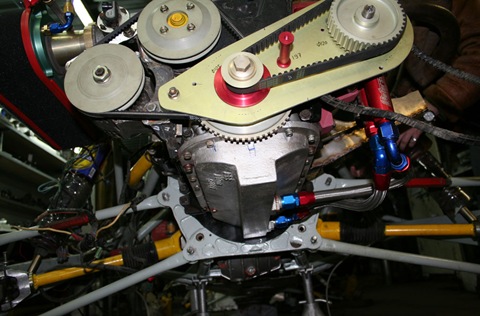
8. Direct-flow exhaust system: due to the geometric nuances inherent in the buggy, it was specially designed and manufactured in the design bureau. According to European technical requirements, at the end there is a catalytic converter-afterburner for transient operating modes of the internal combustion engine. The exhaust system is titanium. Everything is made cone-shaped without steps for better clamping and sealing of the manifold.
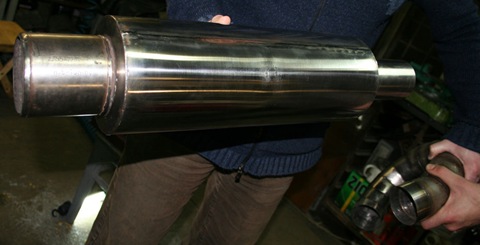
In the 2006 European Championship season, the engine power was 230 hp, the engine spun up to 10,000 rpm without any problems, theoretically the motor can be rotated up to 12,000 rpm, but in this case no one can guarantee its long life. In the future, the design bureau hopes to increase the engine power to 250 hp.
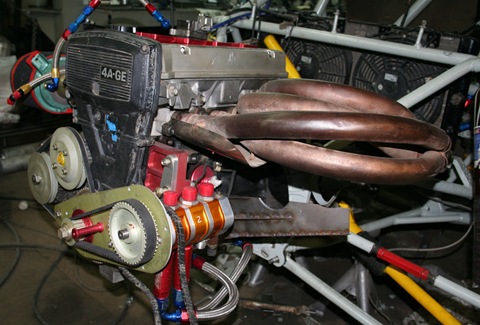

Many agree that "building an atmosphere" is difficult, expensive and, in general, this is not a rewarding business. It is much easier to put a turbine on the motor. But do not forget that the motor shown in this article is made for the Russian and European Autocross Championship, and there, you understand, the regulations. And financial expenses also follow from the rigid framework of sports regulations, but big sport is no longer just a "war of budgets", it is a "war of engineering thought tied to a budget."
In Novosibirsk, some tuners have already made attempts to "overclock" 4A-GE, but so far no one has achieved a successful completion in their work. In Europe and in the western part of our country, many people use engines from VW, Opel and BMW for autocross, but none from Toyota. All these motors are "built" in Germany, Holland, England. Engine maintenance from Volkswagen is much more expensive than from Toyota (at least in Russia). In addition, engineers working with VW engines (or other European engines) sell you a motor and “brains†for it without software, so if the engine breaks down or you decide to modify it in some way, you will have to sweat in search of material resources for the purchase of electronic programs.
PS- The most attentive probably noticed that the RED TOP was most likely taken as a basis, and the valve cover was generally from the compressor 4A-GZE.
What else hides the bowels of the engine, you probably won't know - the buggy is most likely already sold or disassembled. Although I will try to talk to the Kachalkovs, suddenly, upon closing the buggy program, they will tell you something else interesting.
I wonder if they will undertake to build another such motor)
The turbine is simpler. )))
Atmospheric, with equal power, I require incredible investments and brain fucking.
They'll tell you about the settings, but I'll try to find out later what the shafts are and how the food is organized.
In my opinion, it is described how to make an indestructible motor, but not how to squeeze out 230 forces. they will not tell the corners of the mixture, and this is the main thing in their success. and the saddest is the opinion that it is easier to put a turbine :)
The magazine was focused on a novice tuner, but completely self-respecting (and most of them).
I agree that the motor does not contain any kind of know-how, all the parts are somehow tuning, and not purely sporty (with the exception of some systems).
The main thing is that this motor reflects an integrated approach to building the right "combat" motor with a guaranteed result. And not to the devil of a bunch of cool pieces of iron.
Pathetic article! everything that is written should be known to a little bit self-respecting novice tuner.
I tried it on quickly. 125 mm. General performance characteristics are easier to find on the network /
what is the "r / s" of this (or this) motor? or if 1600 then what is the connecting rod length?
STK "Center" is a sports and technical club. Now they are preparing Lada under the ring and racing on the Red Ring - more than successfully. The pilot is Denis Kachalkov, the leader is his father Leonid.
yeah, buggy. It was very interesting to see ... Well, in general, the fact that the engine stands in a different way was especially interesting. transmission of torque to the wheels.
A couple of times I saw these devices on the ring in the sybract.
And who are the STkniki?
Shta exactly? The buggy itself and the motor? For sure. Artists regularly exhibit there.